 Weird Stuff
Weird Stuff  Weird Stuff
Weird Stuff  Our World
Our World 10 Ways Your Christmas Tree Is More Lit Than You Think
 Movies and TV
Movies and TV The 10 Coolest Stars to Set Sail on The Love Boat
 History
History 10 Things You Didn’t Know About the American National Anthem
 Technology
Technology Top 10 Everyday Tech Buzzwords That Hide a Darker Past
 Humans
Humans 10 Everyday Human Behaviors That Are Actually Survival Instincts
 Animals
Animals 10 Animals That Humiliated and Harmed Historical Leaders
 History
History 10 Most Influential Protests in Modern History
 Creepy
Creepy 10 More Representations of Death from Myth, Legend, and Folktale
 Technology
Technology 10 Scientific Breakthroughs of 2025 That’ll Change Everything
 Weird Stuff
Weird Stuff Ten Bizarre Facts About The Doge Meme
 Our World
Our World 10 Ways Your Christmas Tree Is More Lit Than You Think
 Movies and TV
Movies and TV The 10 Coolest Stars to Set Sail on The Love Boat
Who's Behind Listverse?

Jamie Frater
Head Editor
Jamie founded Listverse due to an insatiable desire to share fascinating, obscure, and bizarre facts. He has been a guest speaker on numerous national radio and television stations and is a five time published author.
More About Us History
History 10 Things You Didn’t Know About the American National Anthem
 Technology
Technology Top 10 Everyday Tech Buzzwords That Hide a Darker Past
 Humans
Humans 10 Everyday Human Behaviors That Are Actually Survival Instincts
 Animals
Animals 10 Animals That Humiliated and Harmed Historical Leaders
 History
History 10 Most Influential Protests in Modern History
 Creepy
Creepy 10 More Representations of Death from Myth, Legend, and Folktale
 Technology
Technology 10 Scientific Breakthroughs of 2025 That’ll Change Everything
Top 10 Subtler Forms of Discrimination
While society has not completely discarded racism, sexism and homophobia, at least there’s some public awareness of those issues; other forms of discrimination occur every day and are recognized only by the victims. While we praise our open-mindedness on the ‘big’ issues, could we still be harboring unfair—and perhaps unconscious—prejudices against friends and neighbors? Submitted for your approval are 10 Subtler Forms of Discrimination, and it might open your eyes a bit. Remember, it’s okay to hate people: just do it one son of a bitch at a time.
NOTE: I’m not the subtlest of human beings. Before taking offense, understand I’m not demeaning anyone, belittling their situation, or exploiting their victimhood. I’m not above these things – I’m just not doing it now.
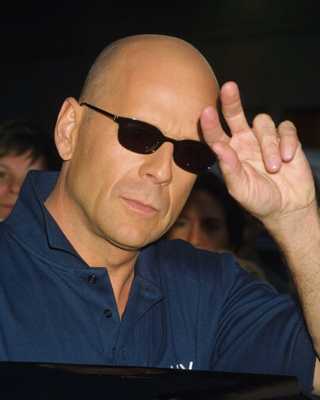
Bias against bald people started early. Ovid in AD 1 said “Ugly are hornless bulls, a field without grass is an eyesore/So is a tree without leaves, so is a head without hair”. Scheherazade asks “Is there anything more ugly in the world than a man … bald as an artichoke?” Historians say Caesar used laurel leaves to hide male pattern baldness, and the Bible in Corinthians 11:15 says a woman’s long hair is her glory. In the 19th century, baldness for men meant wearing a wig if they were to have any kind of public or professional life.
The 20th century’s youth-obsessed culture viewed baldness as old age incarnate, and fueled a billion dollar hair care and restoration industry. Actors Burt Reynolds and Sean Connery obsessed over their hairpieces, and Larry Hagman rotated several toupees each month to simulate normal hair growth. Premature baldness in teen boys and hair loss for women were taken as social catastrophes, and cause for profound depression. Worse, thoughtless bald jokes were considered an entirely acceptable form of humor. It’s also telling that Americans haven’t elected a balding presidential candidate since Eisenhower, in the 1950s. Bald men also confess that dating from the 1960s-1980s was particularly brutal.
But, there is hope. In the late nineties, white men copied African American style (imagine that) and began shaving their heads. It took some time, but now there are plenty of bald film stars like Bruce Willis, Vin Diesel, and Patrick Stewart, not to mention sports icons Michael Jordan and Shaquille O’Neill. Bald is so cool now that men who aren’t bald buzz their hair so short they might as well be (Wayne Rooney, Jason Statham, Tyler Perry, and Dwayne ‘The Rock’ Johnson).
So bald men can be sexy now. Bald women, however, are still at the ‘extreme fashion choice’ stage. They still get treated differently, even by other women (who often ask about their health). But Demi Moore (GI Jane) and Sigourney Weaver (Aliens III) have made successful films with shorn scalps, and Sinead O’Connor was bald for her entire singing career. And they were plenty sexy.
We could be going faster, but we’re headed (groan) in the right direction. Think about it – when was the last time you heard a new bald joke?
So having hair solves all your problems, right?
Think again. There are scores of underlying prejudices that redheads must deal with. Idioms such as “beaten like a red-headed stepchild” or “there’s something about the red ones” and stereotypes of feisty tempers and hypersexuality contribute to an ostracism of people with the genetic phenotype for red hair. (Phenotype is the outward manifestation of genetic traits; genotype is the internally coded genetic information. It’s entirely possible to not be a redhead, and yet have ginger offspring).
In the United Kingdom, ginger discrimination is all too real, despite the fact that there are more redheads in the United Kingdom than anywhere on earth. This familiarity has bred contempt, and even the royal family isn’t safe: Prince Harry’s army unit refer to him as the ‘Ginger Bullet Magnet’. At the Memorial Concert for Princess Diana, in 2007, Prince Harry asked 14-year-old Maxine Broadfoot – winner of the Princess Diana award for peer counseling – if she could advise him on the bullying he received for his red hair. The young girl thought the Prince was joking, but he later went on record saying he was serious.
Some redheads, like Sarah Primmer, have been awarded cash settlements (£18,000) for workplace harassment of their hair color. British courts found that her employer, The Rendezvous Café, tolerated her colleagues routinely taunting Ms. Primmer about her body hair and presumed sex life. She has since died her hair blonde and is ‘so glad’ her children don’t have red hair.
“Discrimination against redheads seems to be getting worse and worse,” according to Simon Cheetham, founder of www.redandproud.com, a website fighting ginger discrimination. “In this politically correct world, you can’t say anything about people’s religion or sexuality, but it’s still OK here in Britain to portray redheads in a negative manner,” he said.
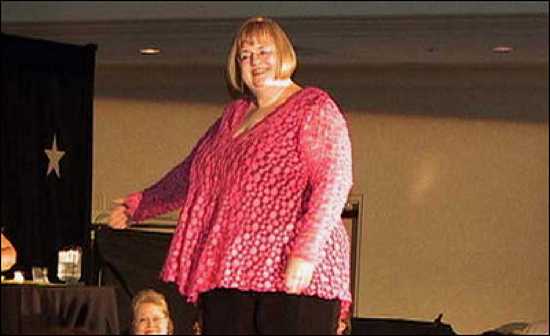
Obesity is a serious medical problem, and people who suffer from it need to achieve a healthy weight and maintain safe diet habits. But while getting healthier, obese people still deserve the same level of (in)dignity that everyone else gets these days.
That’s not happening. According to the International Journal of Obesity, reports of weight discrimination are increasing. Their research surveyed 2,000 U.S. adults in 1995-96 and again in 2004-06, comparing weight discrimination rates relative to other forms of discrimination. The results were alarming. 17% of men and 9% of women reported race discrimination, while among severely obese people, 28% of men and a shocking 45% of women said they have experienced discrimination because of their weight.
Institutional discrimination centered on health care, education or workplace situations, such as cases in which people said they were fired, or denied jobs and promotions because of their weight. Interpersonal discrimination occurred mainly via insults, abuse and harassment. There are currently no federal laws in the US for discrimination based on weight, and arguing weight discrimination as violating the Americans with Disabilities Act is debatable, since the ‘disability’ in question is – in some cases – reversible, and a product of individual behavior.
Adding a face to this debate was Peggy Howell (above), a librarian at a Northern California religious school. She weighed 280 lbs. and was directed by her employer to lose weight or be fired. Her job didn’t physically require a slender person, so legally there was no reasonable basis for her weight loss orders, but the boss said that Ms. Howell’s weight indicated her life was “out of control” and so she was “too fat too counsel students”. The school offered no help, apart from telling her to lose weight.
Feeling she had no choice, Howell lost 120 lbs. at Weight Watchers, and promptly quit her job a year and a half later. She then worked for a marketing company, and later as a bartender, standing on her feet all day and performing more physical exertion than she ever had as a librarian. Ms. Howell is now retired, but still supports the National Association for the Advancement of Fat Acceptance, which works with government to assure equal treatment for citizens of different sizes.
Las Vegas Assemblyman Richard Segerblom cites Ms. Howell’s case as an example of weight discrimination, and says that if nothing else, people should stop discrimination based on physical size for financial reasons. “Taxpayers pay for it if these people can’t get jobs, or good-paying jobs, and have to get unemployment, welfare or other benefits”. To this end, he proposed Assembly Bill 90, which would have outlawed discrimination in the state of Nevada based on physical characteristics such as weight and height. The bill died in committee.
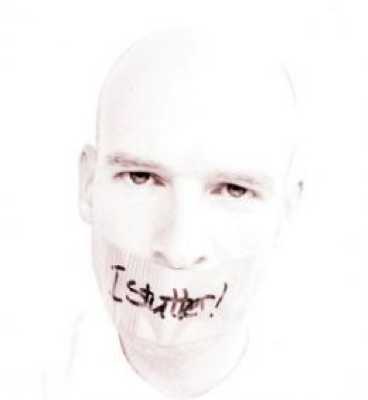
If you have a stutter or other speech impediment, just getting a job is difficult, but even more difficult may be staying at that job. It’s not that stutterers are deficient, but they often face subtle discrimination best described as a “glass ceiling”. Though some companies try to accommodate stutterers, many employers feel stuttering subordinates can’t perform as well as others, and may not be suited to the demands of higher paying jobs. As a result, stutterers are not often considered for promotion, as well-meaning managers try to ‘protect’ the employee from assumed failure.
Stutterers themselves admit some occupations aren’t suited to their condition, and they’re not really bitter about it: some work requires extensive talking with customers and clients. This leaves fewer career choices, but worse, most of the higher paying jobs only require occasional speeches or presentations. Most stutterers can get through these just fine, but scant promotion opportunities deny them the chance to prove it. This often results after closed-door discussions about the employee, where someone asks the (seldom documented) question “But how would they do in front of people?”
This isn’t conjecture. Major James Sproles was removed from two separate deployments to Afghanistan as a legal officer advising on topics like rules of engagement. Newspaper The Australian obtained a copy of Major Sproles’ file, and learned top-level officers had “concerns” about his ability to conduct briefings. There were no complaints (just ambiguous “concerns”), and Major Sproles has since lodged a discrimination lawsuit about being blocked from combat postings.
It’s not just the armed forces. A survey by the National Stuttering Association reports that 40% of adults who stutter have been denied a job or promotion. To avoid treating stutterers this way, employers must fully understand the employee’s capabilities, and give them an opportunity to prove they can speak effectively. Then the employer can consider observed performance in perceived problem areas instead of relying on hypothetical conjecture.

Discriminating against people based on physical attractiveness is thoughtless and shallow, but the ugly truth is attractive people earn more and are treated better than their plainer counterparts. They even get credit for positive characteristics they don’t deserve.
In 1994, Drs. Jeff Biddle and Daniel Hamermesh analyzed surveys conducted by government agencies in Canada and the United States. The surveys asked questions regarding income, occupation, and background, and then applied ratings for interviewee attractiveness (1-homely, 2- below average, 3-average, 4-above average, 5-handsome/beautiful).
The study showed that working men rated “homely” or “below average” in attractiveness earned 9% percent less than average. But men who rated “above average” or “handsome” earned 5% more than the average. Women were also rewarded and penalized for their looks, but at a gentler rate. The most attractive women earned only 4 % more than average, while the least attractive women earned only 5% less than average. Biddle and Hamermesh concluded that “there is a significant penalty for bad looks among men.”
Additionally, research pioneered by Dion, Berscheid and Walster on attractiveness identified a “Halo Effect” that follows attractive people. In this study, participants were asked to rate photographs of three individuals, on a scale of low, medium or high attractiveness. Then subjects were asked to rank other, totally unrelated aspects of the people in the photos. Based on nothing more than photographs, subjects said the more attractive individuals had better personalities, better jobs, were better spouses, were more socially and professionally happy, and married earlier. In fact, the only category where attractive people didn’t come out on top was the question of who would make better parents.
According to Dr. Mona Phillips at Spelman College in Atlanta, “…people assume that if someone is attractive, then they have other good qualities. It’s a clustering of good attributes that are assumed based on one’s appearance. For example, ‘attractive’ people are smarter and the people who are ‘unattractive’ by society’s standards are dumb. Therefore a clustering of their personal attributes gets connected to physical ‘attractiveness’ or ‘unattractiveness.”
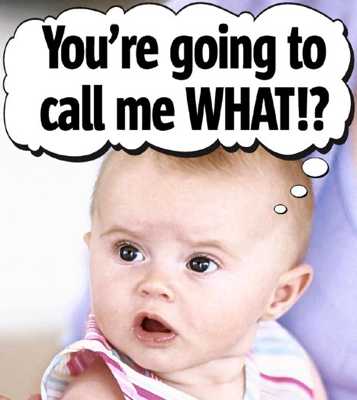
Minorities are torn between celebrating their culture by giving their children ethnic names, or helping them assimilate into society with a name that doesn’t stand out. For example, to increase their marketability and avoid discrimination, many Jews in the USA have changed their names to sound more “American” (Stein to Stone, etc.).
Since the 1960s, American blacks have chosen increasingly distinctive names for their kids. This wasn’t always the case: 100 years ago, you’d have a very tough time identifying a ‘black’ name from a ‘white’ name. You probably couldn’t do it at all. Now, some names are exclusively associated with blacks (DeShawn, Shanice) or whites (Cody, Caitlin).
So far, so good. Names are just words we use to identify ourselves, right?
Maybe not. Two studies from the National Bureau of Economic Research in Cambridge yield mixed results on whether a black-sounding name is an economic burden. One study of 16 million births in California from 1960-2000 found no link between someone’s name and their later success in life. The second study suggested black-sounding names are a barrier to getting hired, and much less likely to get a resume callback.
In 2008, Marianne Bertrand at the University of Chicago and Sendhil Mullainathan of MIT replicated the results of the second study. Their paper “Are Emily and Greg More Employable Than Lakisha and Jamal?” describes how they took 500 resumes from online job boards, evaluated them for marketable factors like education and experience, and replaced the real names with stereotypical ” white” or “black” names. They made no other changes, and sent the resumes to 1,300 job advertisements placed in the Boston Globe and Chicago Tribune.
Third rail, dead ahead!
“White” names received one callback for every 10 resumes sent out, while “black” names received one callback for every 15 resumes sent out. “Carries” and “Kristens” had a 13% callback rate, while “Aisha”, “Keisha” and “Tamika” had respective callback rates of 2.2%, 3.8% and 5.4%. Having a high-powered resume unfairly rewarded whites over blacks as well. Resumes with more skills and experience upped white-name callbacks 30%, but a better resume only benefited black-name resumes by 9%. Even “equal opportunity employers” showed this bias, so Bertrand and Mullainathan now recommend companies shouldn’t look at names when first evaluating a resume.
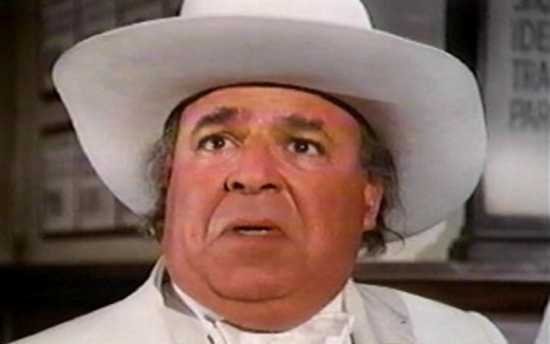
Coined in the 1980s, linguicism is a form of prejudice that makes uninformed judgments about someone’s wealth, social status, education, character, and other traits solely based on language skills. This discrimination also includes bias against people’s accents, vocabulary, diction, and ability to use one language instead of another (e.g. speaking English in parts of Quebec or Japanese in Korea). It can be murder in a job interview or the dating scene, where verbal acuity is at a premium.
For example, people in the American South have long suffered a stereotype of low intelligence based on nothing more than accents featuring pronounced drawls and slower cadence. Britons speaking with Cockney accents are assumed to be hopelessly (and unfairly) lower class. In contrast, a British accent in the USA artificially increases someone’s perceived intelligence, and many Americans putting on airs do so by first adopting an English accent (which might explain why Madonna no longer sounds like she’s from Detroit).
Note that none of these instances mention anything about content. What is being said is willfully ignored so style can win over substance. Linguicism is often subconscious because there are no social taboos against it, primarily because people believe control of one’s speech is voluntary. As a result, many people feel justified to draw inferences about a person’s education based on their language proficiency, which is, after all, taught and tested in schools.
The most concrete examples of linguicism are in the workplace, and usually impact immigrants the hardest. Linguicism occurs if management refuses to hire or otherwise treats individuals differently in their employment because of their native language or other characteristics of speech. Common examples of occupational language discrimination include single-language policies, unfair accent preferences, or lost merit increases due to vague descriptions of ‘poor communications skills’ (especially when the job doesn’t require fluency in that language).
In the United States, Title VII of the Civil Rights Act of 1964 protects individuals from discrimination based upon national origin and race, and some courts have ruled that discrimination based on language is a form of national origin discrimination. However, this area of the law is still developing, and varies from state to state.
We’re not talking black vs. white here (too straightforward), but lighter vs. darker complexions in the same race or nationality.
For example, in 2007, Vanderbilt law and economics professor Joni Hersch analyzed a 2003 government survey of 2,084 legal immigrants to the USA. She found that immigrants with lighter skin earned 8-15% percent more than similar immigrants with much darker skin. The results held even after accounting for English proficiency, education, race, and country of origin.
The survey used an 11-point scale for measuring skin tone coloration, with 0 for an absence of color and 10 for the darkest possible skin tone. Hersch concluded that on average, being one shade lighter is equivalent to an additional year of education. University of North Carolina economics professor William Darity Jr, said Hersch’s study replicated the results of his 2006 paper on skin tone and wages among American blacks. Neither study could verify whether the apparent employment bias was conscious or unconscious.
This preference also plays itself out in African American social dynamics, and whites are almost totally ignorant of it. Bear with me here – remember my note at the beginning of this list (seems ages ago, doesn’t it?). Here goes: There exists today a perceived social preference for lighter skin in the African American community, complete with bidirectional stereotypes and its own specialized lexicon. Complex interpersonal and communal relationships now exist based on a random genetic manifestation.
The sheer number and callousness of terms for different African American skin tones is alarming. They start from the innocuous “Light Bright” and “Mocha”, and quickly devolve to more derogatory terms as shades darken (‘high yellow’, ‘piss yellow’, ‘redbone’, ‘midnight’, ‘burnt’ and ‘crispy’). Darker women report they often receive backhanded compliments such as ‘you’re pretty for a dark girl’. What, “pretty” isn’t enough? They also refer to a ‘pecking order’ on the dating scene where light-skinned women have the upper hand.
And it gets more complicated in reverse. Light-skinned black men are often stereotyped as being more militant on race issues because they are overcompensating for yet another stereotype, which is that dark-skinned men are more masculine than “pretty boy” light skinned men. Light skinned women also complain they are unfairly stereotyped as having a superiority complex over darker women.
At this point in my research, my head exploded. Fortunately, Elnora Web, President of Laney College in Oakland, CA, sums it up nicely: “There is something related to color that we have bought as a society -across the board – that somehow associates excellence, associates promise, associates possibilities, associates competence, intelligence, and worthiness, with a lighter hue. And somehow the darker you are, the less likely you are to be of any asset, or let alone, any contribution or success in society”.
Well said. All I’ll say is that “something” is wrong, and the just-hate-one-son-of-a-bitch-at a-time motto is looking better all the time.
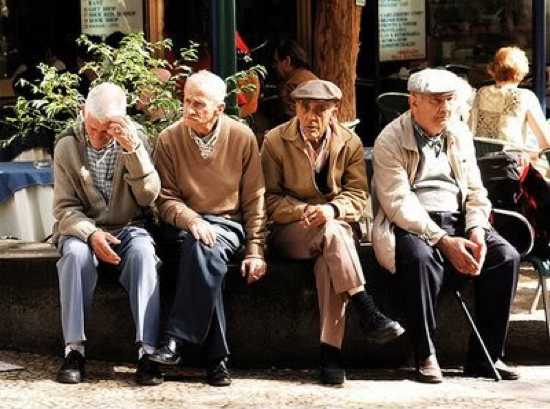
Western society’s attitude towards aging is predominantly negative and juvenile. Just being “old” is perceived as a handicap that turns people off. Why?
Well, conventional wisdom (wrongly) dictates a person’s energy and talent (and thus, their value to society) peaks during their 20’s and 30’s. Anyone older than that is considered “over the hill” and “past their prime”. Some people even consider seniors no longer “regular adults”, since they have outlived their usefulness.
Those misconceptions result in unfair stereotypes about the actions and characteristics of the elderly. For example, when seniors are unsure of something, we suspect they are feeble or senile. When they don’t hear something we say, they are accused of not understanding us, instead of having trouble hearing. When they get angry, they’re called “cranky”, even though that’s diagnosing a chronic personality trait from a temporary mood.
As a result of these stereotypes, many people discriminate against seniors without stopping to think about it. Even though it’s for comedic effect, TV and radio constantly reinforce the image of seniors as dependent, lazy, and nasty people clueless to their surroundings. Seniors living on their own are thought to be endangering themselves, and get encouraged to further segregate themselves into retirement communities “for their own good”.
Worst, however, is the job market. Even if they can find work, studies show elderly people in the workplace are less appreciated by management and peers. Seniors are often forced to retire, due to “disproportional experience”, which ageism advocates say is a corporate ploy to replace them with cheaper workers and prevent (perceived) increases in healthcare costs.
And we’re gonna be them someday.
Any American male under 5 ft. 8 in.— average US height—is a victim of discrimination, according to Case Western sociologist Saul Feldman. He notes bias against short men is so long-running and pervasive that no one notices it—except the short man himself. The point is quickly illustrated in language: instead of the neutral “What is your height?” people ask “How tall are you?”
In romance, height is a deal breaker. A woman’s ideal lover is never short, dark and handsome, and both sexes believe the male should be taller than the female. Thus, while the tall man has all of womankind to choose from, the short man may only pursue relationships with smaller women. Fertility clinics even have height requirements barring donations from men 5′ 5″ and under.
This is where it gets cruel. To illustrate the point, American news program Dateline NBC asked a group of single women to view a lineup of men consisting of different heights. Dateline then gave the women fictional descriptions of each man as they viewed the lineup, and asked if they would date that candidate. The best looking man, by all accounts, was 5′ 5″, and he was never picked despite repeated trials. Even when a single mother was told this man was ‘independently wealthy, loves kids, and enjoys cooking” she rejected him. When confronted with the truth, the women were shocked and a little embarrassed at how ‘shallow we all were’.
Business has its share of successful short men, but it’s far from a level playing field. A University of Pittsburgh survey shows that graduates 6′ 2″ and over received average starting salaries 12.4% higher than those under 6″. In another study, 140 corporate recruiters were asked to make a hypothetical choice between two equally qualified applicants, one 6′ 1″, the other 5′ 5″. Nearly three-quarters hired the tall man; only 1% chose the short one. Sometimes the bias is comical: in 2006, in Hunan Province (China), a university graduate was refused a civil service job because he was one centimeter shorter than the required height – for a clerical position.
Yet even when he succeeds or excels—despite the odds against him—the short man is accused of being a “little Napoleon”, pathetically overcompensating for his short stature. Thus, society’s rules have his successes mock him. Should he dare complain, he’s just an angry little man; yet another stereotype.
Options are limited, so most shorter men just shake their heads and get on with the business of life. Some wear lifts in their shoes to get an additional 2-3″ taller. The truly obsessed can go for Symmetric Leg Lengthening surgery, an agonizing procedure where both shins and femurs are broken. It’s 10 out of 10 on the pain scale, and doctors prescribe minimal pain management. Metal pins are inserted between the severed bones as they heal, and the recovery process takes over a year. At best, the patient will ‘grow’ 3 or 4 inches in height.
Just so they can be treated like everybody else.








